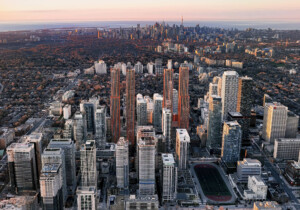Whether you think the windows recall a maritime history of New York or that they look like tombstones, Adjaye Associates’s new condominium tower at 130 William, in Manhattan’s Financial District (FiDi), is a striking departure from FiDi vernacular. His is not another anonymous glassy tower, but rather a volcanic black facade richly textured and perforated with deeply recessed arched openings, making the facade feel almost like a curtain wall. It’s the U.K.-based designer’s first condo commission, as well as his first tower. Topping off at 66 stories, Adjaye joked at the grand opening of the project that “in the U.K., a tower might be anything around 20, 25 stories.” But the Ghanaian-born architect definitely made his mark on the supersized skyline of Manhattan with an unapologetically unique debut.
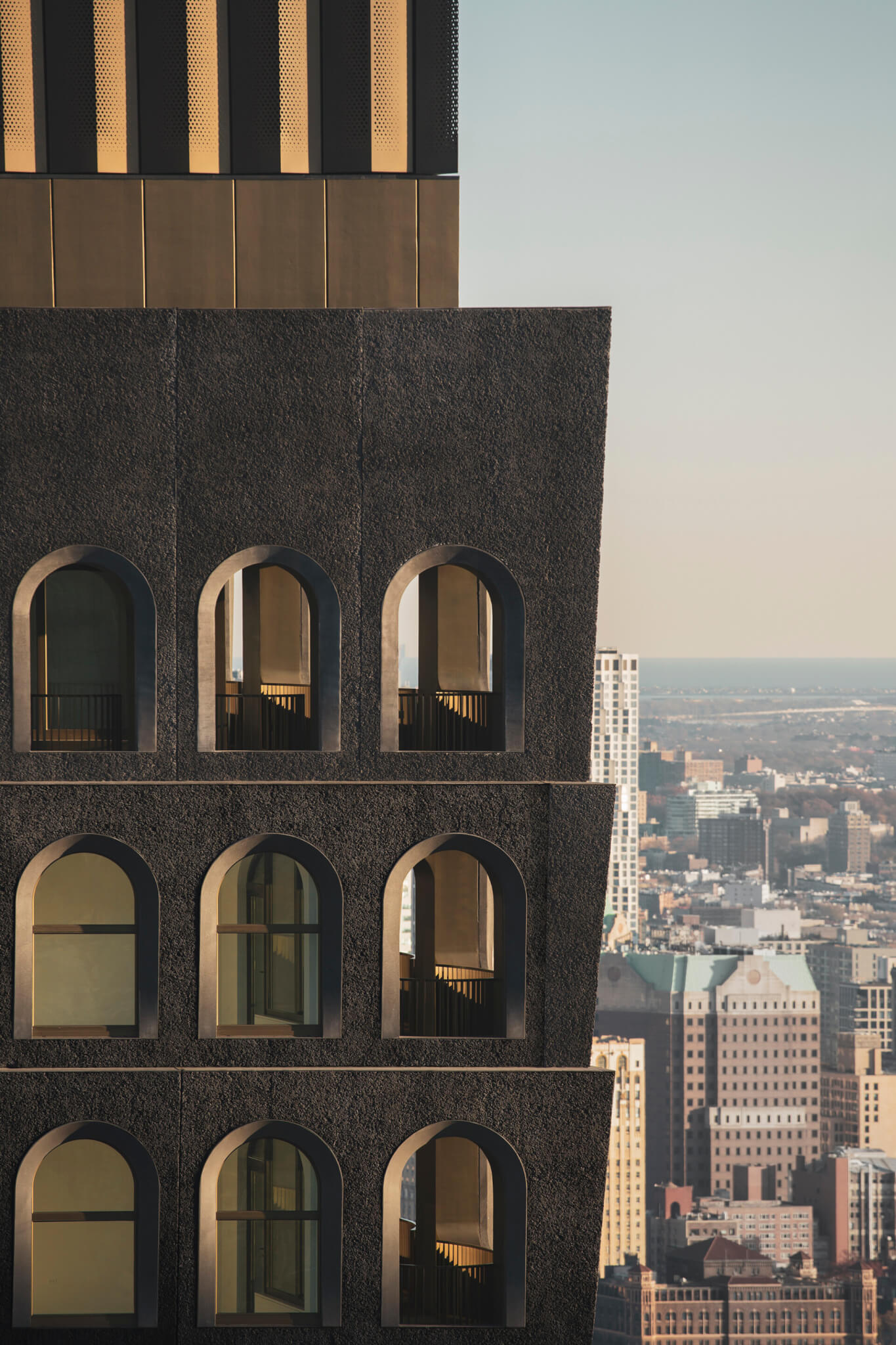
Adjaye perched on a high stool with microphone in hand at Monday’s unveiling event, though he didn’t have to use it. The crowd was intimately sized, moving between three completed apartments on the 62nd and 65th floors—the first time the building was opened for public viewing. Workers had just taken down the street level scaffolding a few days earlier, finally unveiling Adjaye’s vision for an “outdoor room”—his own riff on the popular PoPS spaces that dot Manhattan’s business districts. The generous plaza in front of 130 William offers abundant seating, shade, and visual and sonic reprieve from the bustling density of Lower Manhattan’s ungridded southern streets. Already, Adjaye said, he has seen workers enjoying sandwiches on lunch breaks amidst the landscaping, or taking casual group meetings at the shaded tables.
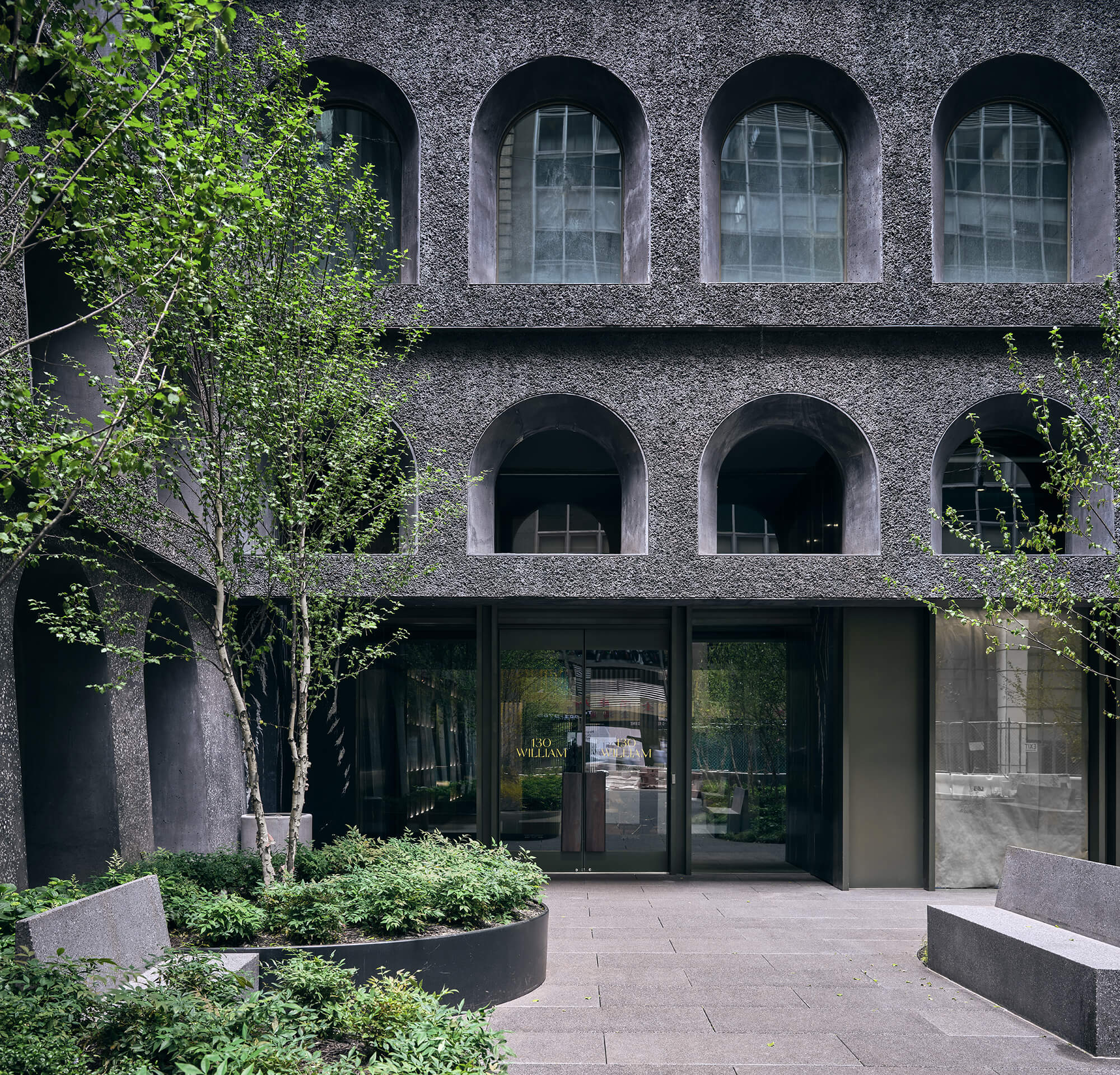
“I wouldn’t make this building anywhere else,” the architect said. Adjaye’s vision for the tower is rooted in New York–specific history: that of its dockland heritage. Historic warehouses that still in some places dot the nearby shorelines in the Seaport District and across the East River in Brooklyn’s DUMBO neighborhood were characterized by their deeply inset arched windows. These were openings in otherwise heavy, load-bearing brick facades. Adjaye also quipped that back in 2015, when designs were first underway, “the arched opening wasn’t even trendy yet.” Maybe this adds to the tower’s salability: it’s currently noted as being the best-selling condo on the market.
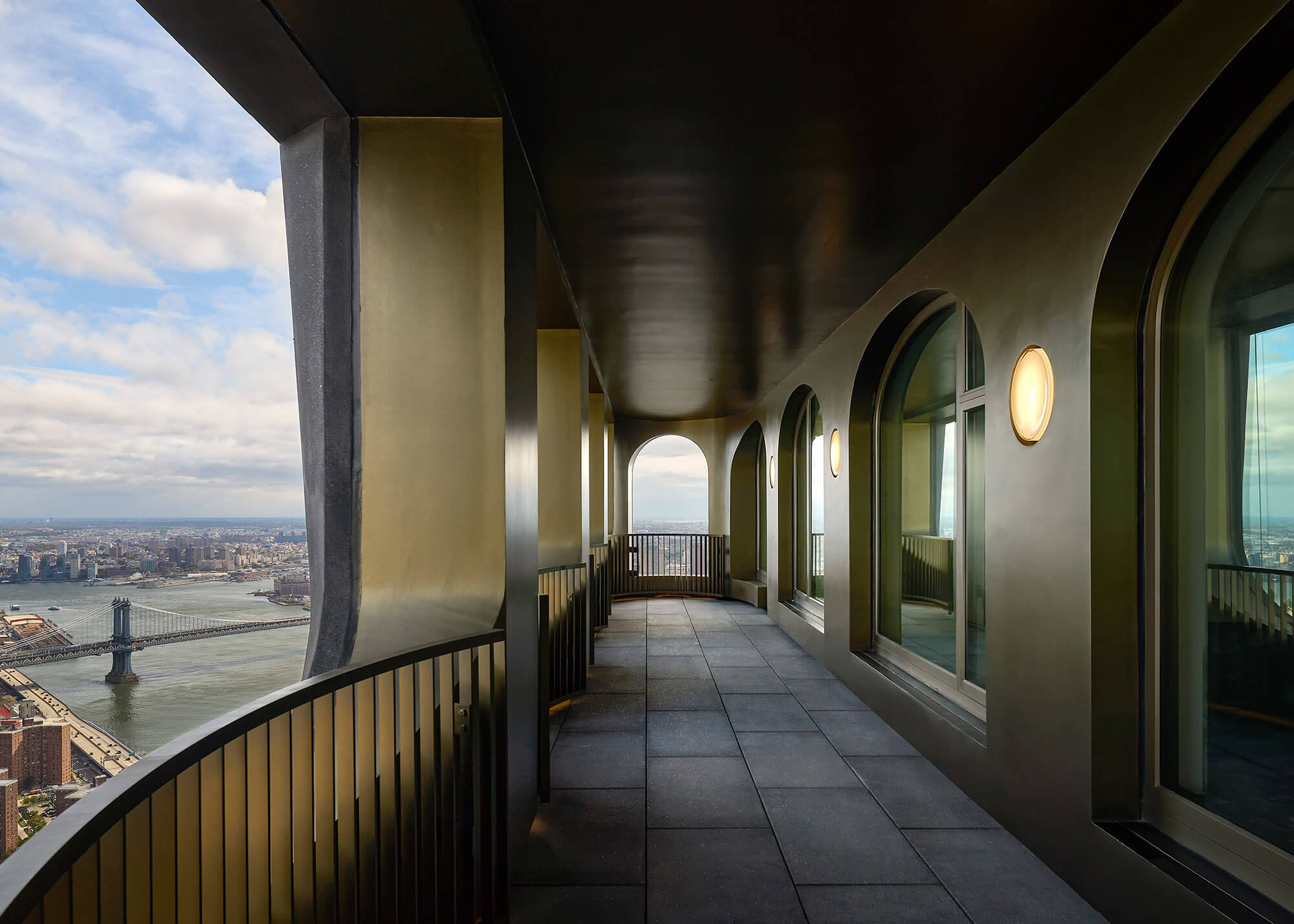
Adjaye was quick to praise the craftsmanship that went into an otherwise industrially streamlined design process. While the concrete panels were prefabricated in factories offsite—with window fixtures included—the final finish of the bold concrete was troweled by hand, adding in a volcanic ash to the mixture giving the tower its dark, textured feel. Somehow, this might differentiate 130 William from the also recently completed Brookyln Tower by SHoP, also a black protrusion up from the dense mat of the city. Where the Brooklyn Tower is sharp, angular and shiny, calling to mind jagged metal, Adjaye’s design is soft and organic.
Windows allude to, and at times reveal, the life within the archways and also boast generous upper-floor balconies. Views at the east look down on all of New York’s bridges, and then walk the length of the floorplate to the west, one encounters the Freedom Tower. Wrapping around further, though, is a balcony offering a 360-degree view of the Battery (the very tip of Manhattan) situated just before the nearly monastic loggia: the crown jewel of the penthouse. Complete with bar and gas grill, this “rooftop” is surrounded by archways and completely roofless, therefore open to the elements. The sky is your skylight.
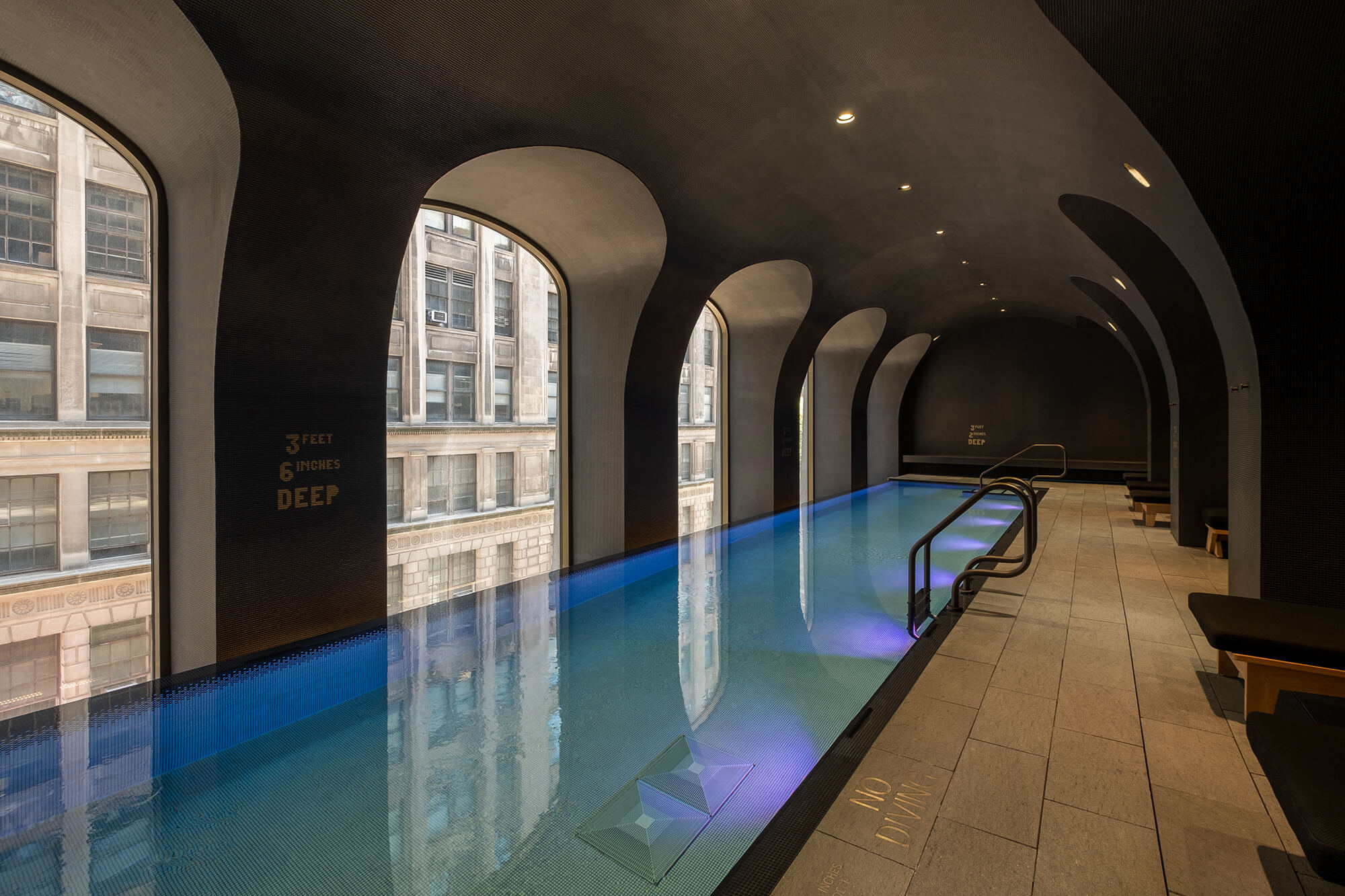
While the facade will be visible, more or less, to all New Yorkers, the interiors of such a skyline-defining project are very much out of the public eye. Rich, solid walnut is the dominant material, defining doors, cabinets, and closets, accented with original Adjaye-designed bronze hardware. Floors are surfaced with oak tones, reminiscent of Scandinavia’s characteristic wide-plank floors. The light tone made the space feel expansive and bright. And finally, richly veined black marble set the tone for kitchen and bathrooms, creating an intense juxtaposition between the light-toned floors and the dark massing of kitchen islands, sinks and countertops.
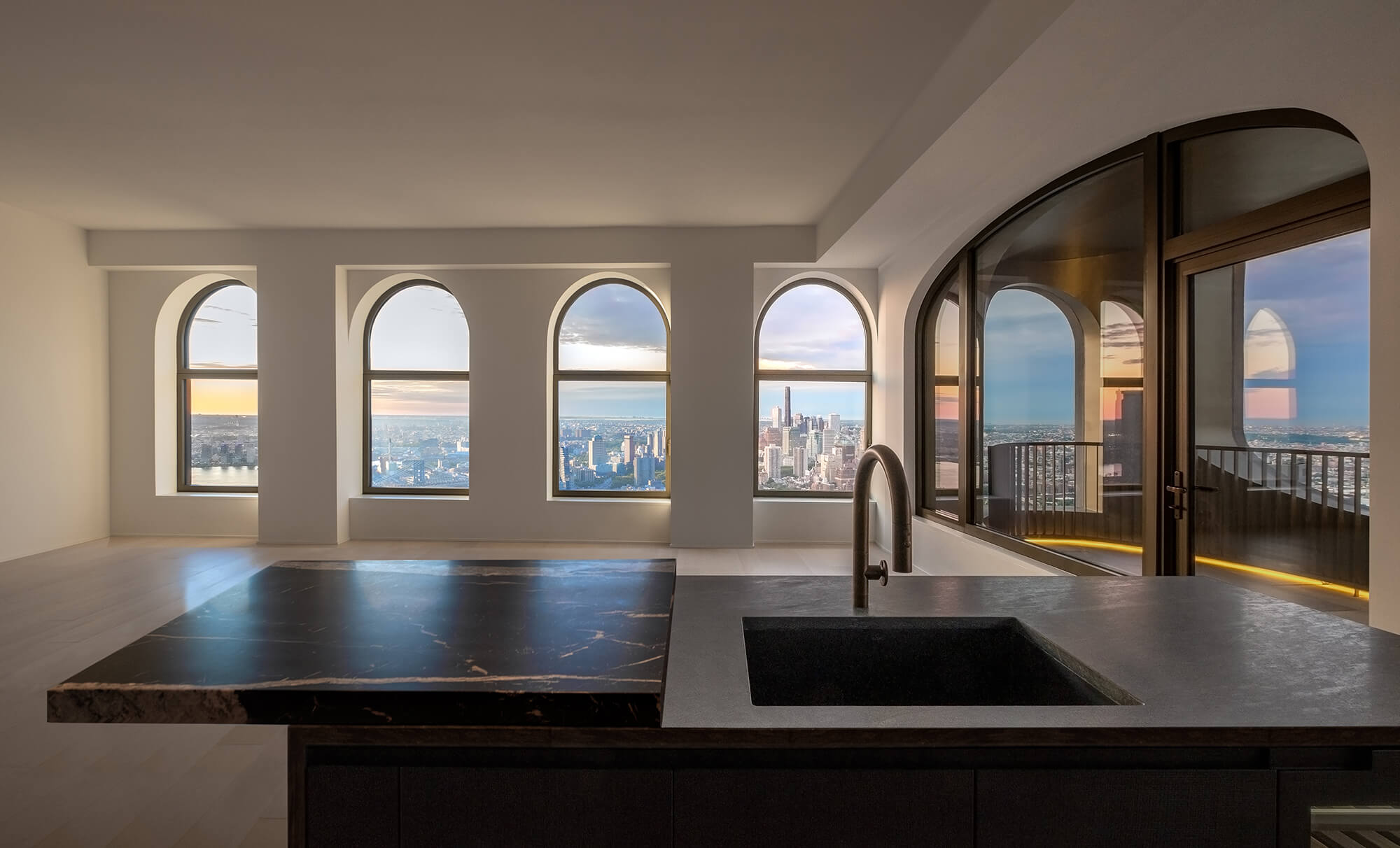
In the lobby a deep-green swatch was chosen for inset leather banquettes, where a delicious, slightly herbaceous custom room scent filled the air. The aroma extends from the lobby to the elevators and into the residential corridors: A successful place-making strategy that gives a spa-like feel to the entire interior, and again, a welcome reprieve from the much messier world 66 floors below.








